Amazfit Stratos
Amazfit has proved its ability to release affordable gems like the long-lasting Amazfit Bip. Now, with the Amazfit Stratos, the company is taking its fitness trackers to the next level with a watch that features multi-sport support, V02max oxygen consumption measurements, and a partnership with Strava, among other inclusions that will please gym goers.
Of course, the step up to the big league of wearables comes with a bump up in price over what we’re used to seeing with Amazfit. It retails at $199 (around AU$256), still a cheap price all said. In addition to all of the extra features, it possesses some design elements that we’re more used to seeing in a smartwatch.
Since the US launch, we've also seen the product launch for the UK set in the middle of June where it's set to cost £145.99. That's a touch cheaper than what it costs in the US, but we've only seen it up for pre-order on Amazon so far.
While not the most user-friendly option on the market, nor the most low-profile device, the Stratos is an impressively feature-rich wearable that undercuts the likes of Garmin and Polar with its sheer amount of activity support.
Amazfit Stratos price and release date
The Stratos ranks among Amazfit’s more expensive wearables at $199, and is available through Amazfit’s website in the US, as well as Amazon.
If you’re outside of the US, we’ve seen Xiaomi (Amazfit maker Huami’s parent company – yep, it’s confusing) selling it direct through Amazon for £145.99. That won't be in stock until the middle of June though.
We’ll be keeping a lookout for added availability elsewhere, but like Amazfit’s other wearables, the Stratos isn’t available everywhere.
Design
The Amazfit Bip looks quite similar to the Apple Watch until you take a closer look, but the Stratos asserts its smartwatch style throughout the presentation, both inside and out.
Resembling a big, bulky first-generation Wear OS smartwatch, the Stratos wears its circular watch build proudly – it even has the flat tire-laden display infamously introduced by the Moto 360.
Built with a ceramic bezel that surrounds its Gorilla Glass-covered top, the Stratos gives off an undeniably premium aesthetic that will catch the eye of smartwatch enthusiasts. But it offers more than just good design: encased stainless steel buttons and a carbon fiber-esque etching around its case, the waterproof Stratos is actually as tough as it looks.
This thick wearable is surprisingly light at 70 grams, and its 1.3-inch touchscreen always-on display is quite large and is easy to read thanks to a contrast-heavy presentation and backlight, yet the viewing angles aren’t generous.
For a fitness-focused wearable at this price, it’s tough to ask for something more streamlined than what the Stratos provides. But if you’re used to something like the Fitbit Ionic or the Apple Watch, this is going to feel monstrous.
Thankfully, the Stratos yields a cozy fit, even when laced up tight enough to get an accurate heart rate reading – something we couldn’t say about the Amazfit Cor.
Around the back of this fitness tracker is a heart rate sensor and charging port. While the former protrudes from the chassis quite a bit, it doesn’t impact comfort in the slightest and it might be the design call that helps this device get reliable heart rate readings.
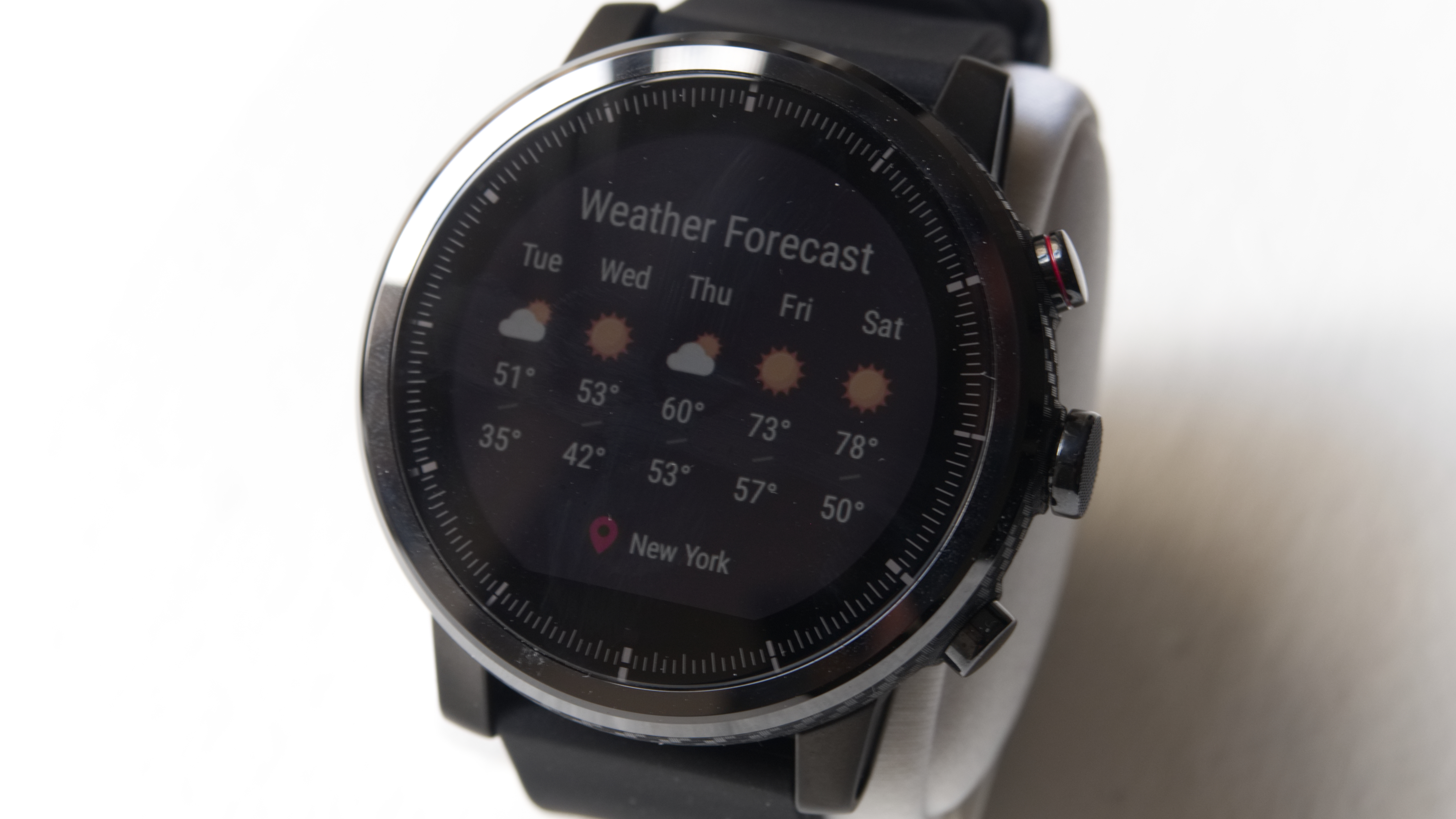
Interface
When it comes to actually using the Amazfit Stratos, those who are comfortable with smartwatch interfaces will likely be befuddled by what’s on offer here. Similar at times to Wear OS, it’s tough to get a sense of how you’re supposed to navigate Amazfit’s proprietary software at a given moment.
Sure, the required Amazfit Watch app walks you through it, but you’ll likely need to practice for a few minutes before it feels somewhat natural. Even then, it’s still unintuitive for tech with a touchscreen.
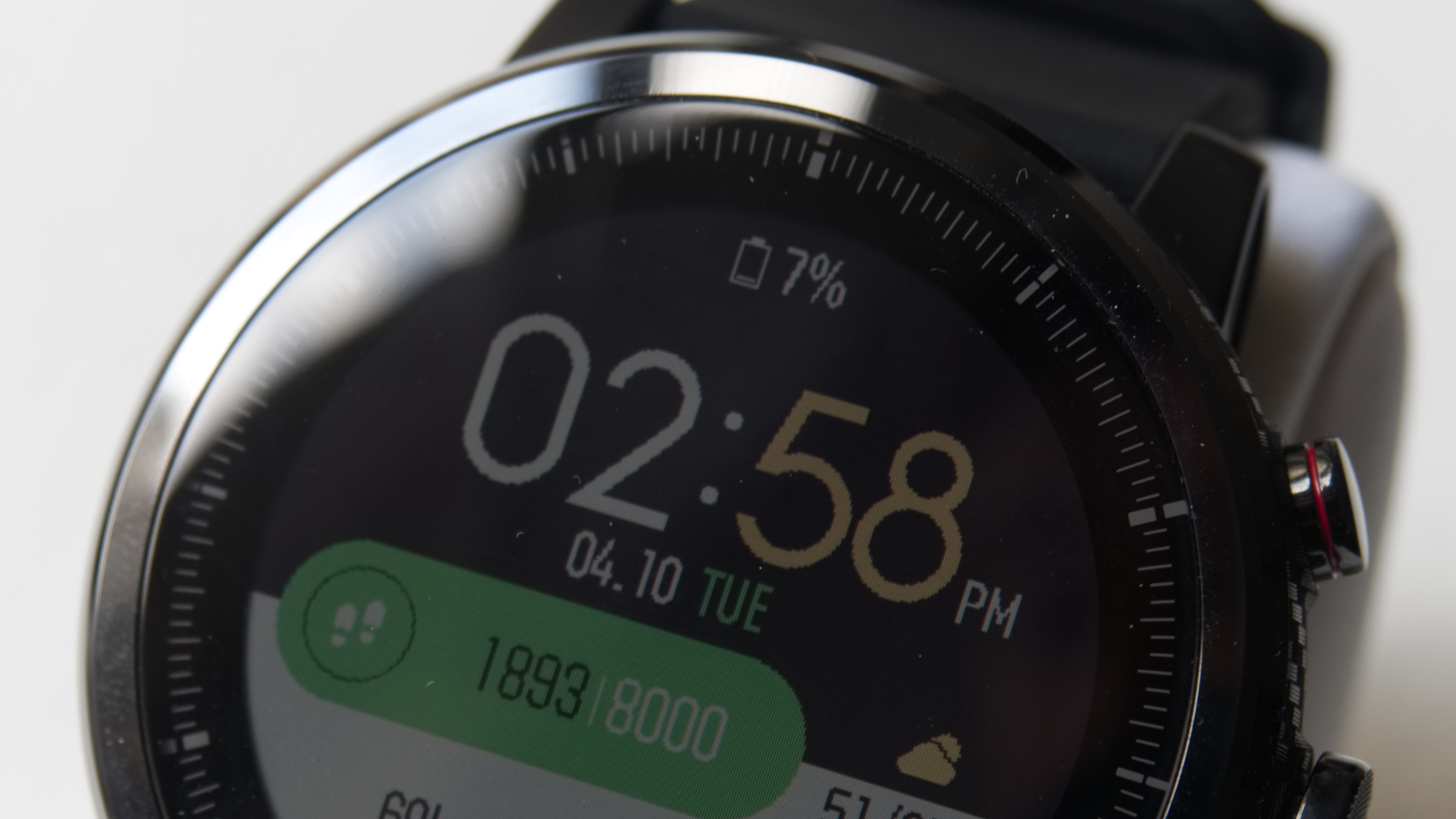
The button wrapped in red trimming is the power button, but it also acts to navigate backward in the user interface, which has 13 pages to sort through (though you can disable ones that you deem unnecessary through the Amazfit Watch app). Opposite from the power button, there’s another button that can navigate the other direction through the interface. Alternatively, once you hit the power button, which acts to unlock the watch, you can swipe with your finger – a much easier option. However, it will still likely take you over 5-10 seconds to perform the task you’re after.
While working out, a whole other slew of controls are used to execute fitness-based tasks and while they make sense on paper, in reality they couldn’t feel more foreign.
Using the touchscreen to navigate really is the easiest way to get around the Stratos, but that’s not the case when you’re working out. Difficult as it may be for those uninitiated to fitness watches, it pays to learn the button layout.
Like most fitness trackers, the Amazfit Stratos (along with its other wearables) are compatible with iOS and Android smartphones. But unlike the others, the Stratos can do more without being synced up with your phone. It can track activities with its dedicated GPS chip and you can listen to locally stored music with a set of Bluetooth wireless headphones.
You’ll still need to initialize it with the Amazfit Watch app – oddly, the Mi Fit app that other Amazfit wearables utilize isn’t used at all. From there, it lets you more easily customize the watchfaces and other settings that are much harder to access on the watch itself.
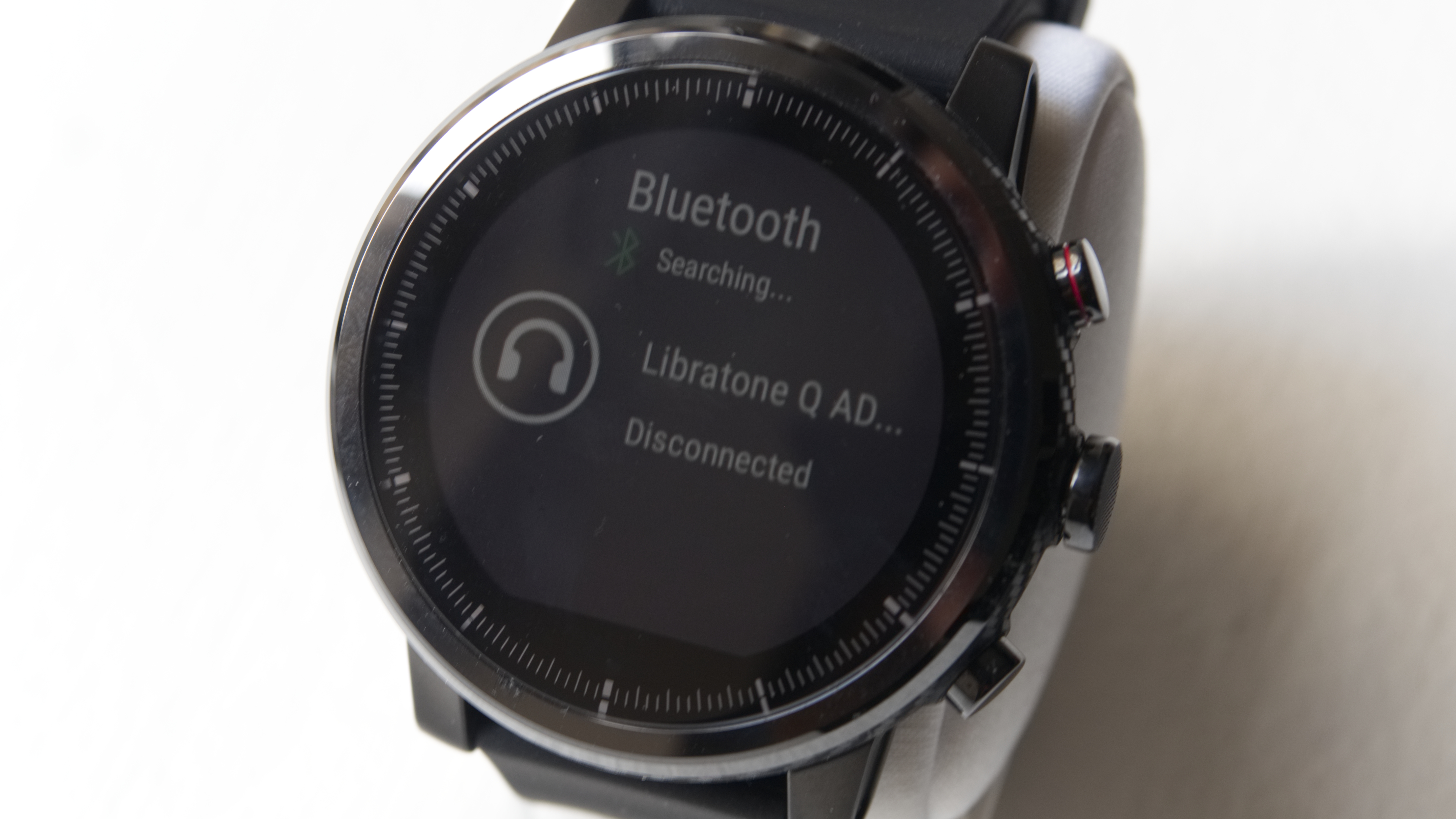
There are few wearables companies who have a strong handle on the software side of things, and the Stratos proves that Amazfit isn’t one of them just yet. While the offerings are relatively friendly to new users and data-rich, it’s just a little strange that this uses a completely different app than the company’s other fitness trackers.
In terms of the watch’s battery life, it of course depends a lot on how you’re using it. Amazfit advertises a five-day battery expectancy and it definitely delivers on that promise. That’s after a healthy mix of activities, all of which utilized the GPS sensor and heart rate tracking. It’s worth noting that turning on continuous heart rate sensing and streaming music via Bluetooth are two very good ways of tanking the battery life. But should you just use it as a watch, you’re looking at more than a week of battery here.
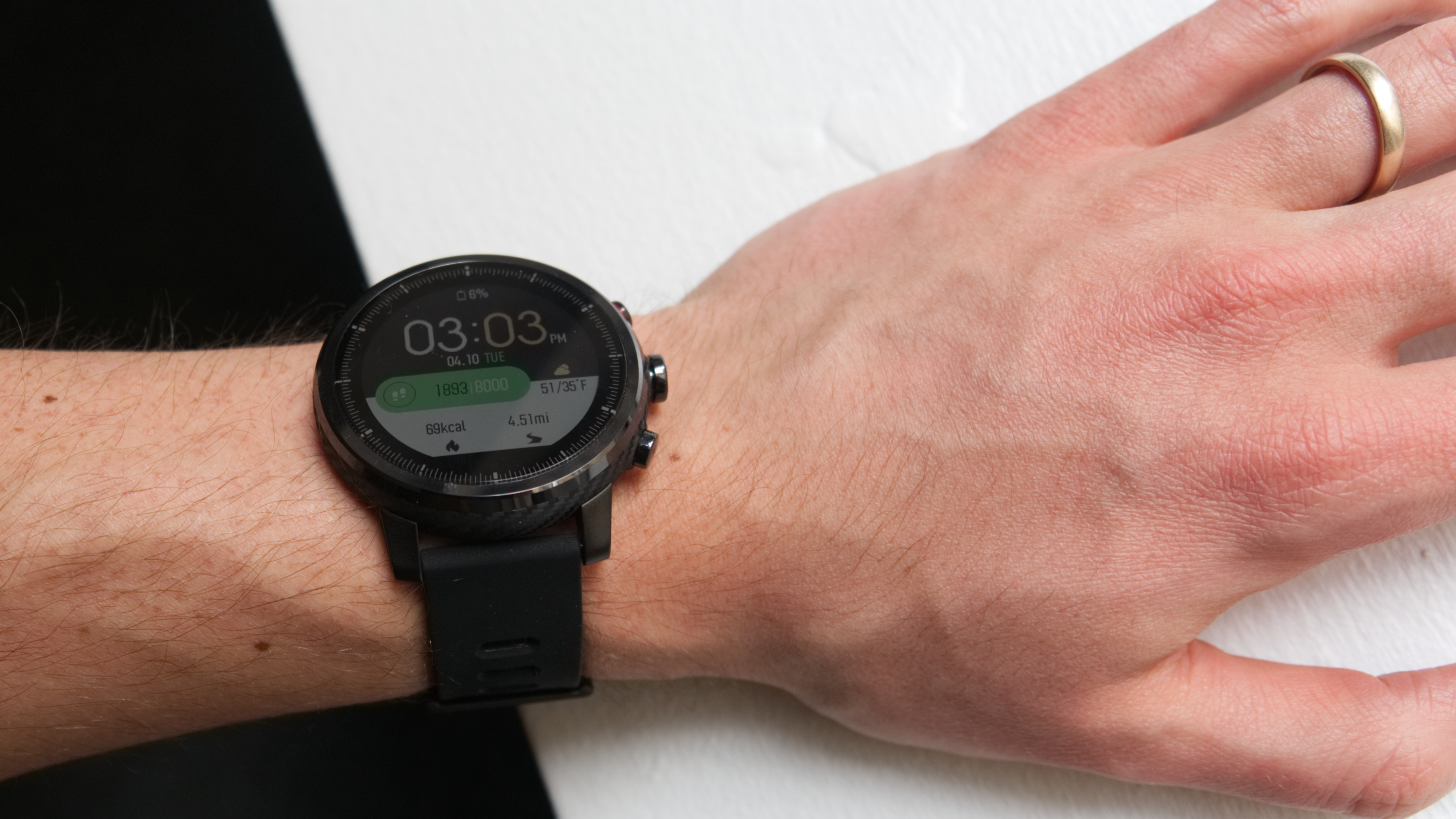
Fitness
The Stratos is Amazfit’s most ambitious wearable, both in terms of its design and its fitness-ready features. If you’re scouring the market for a device that will be a reliable gym buddy, you’ll quickly realize how expensive most of the options out there are.
The Garmin Forerunner 645 Music, for example, has a similar set of features to the Stratos, but comes in at $399 (£399 / around AU$520). There are things that Garmin’s model, as well as others, accomplish with more prowess. Most notably is the interface, which does a better job packaging data on the screen, and more elegantly shows off the many duties of its hardware buttons.
But for about half the price, the Stratos does a whole lot in the fitness department. In terms of the workout types it can track natively, this includes running, walking, cycling, swimming, elliptical machine, mountain climbing and hiking, trail running, triathlon, tennis, soccer and skiing.
You can get granular with your fitness, should you desire. For example, the bottom button on the Stratos lets you trigger the lap function so you can time your reps if you’re aiming to get a lower time running around the local pond. Of course, something like this comes in handy when you’re swimming, which along with showering is a worry-free workout thanks to this watch’s waterproofing that can withstand five atmospheres of pressure.
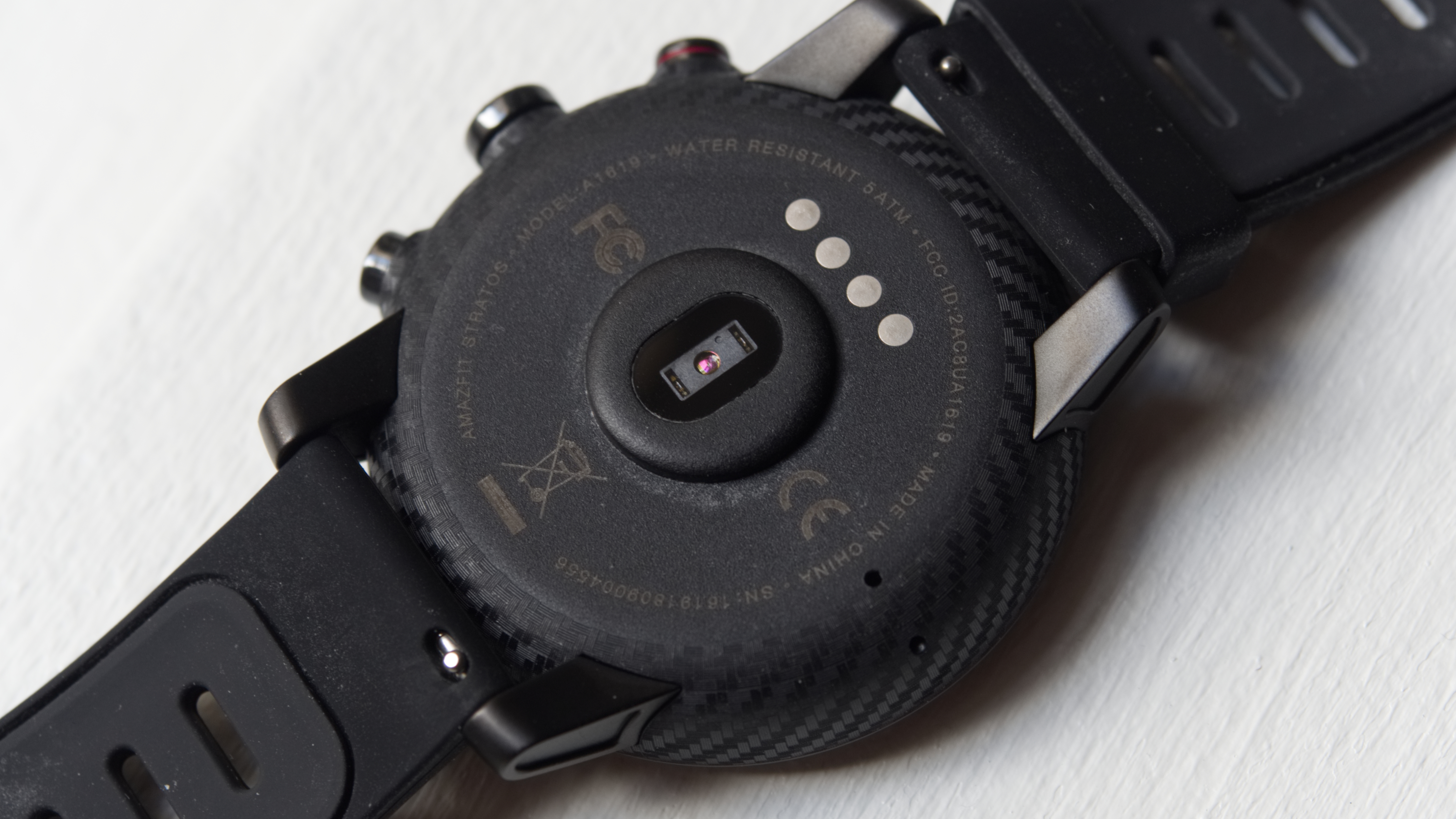
No matter the workout, you can easily pause your progress by tapping the top button. From what we’ve seen, this watch doesn’t support auto-pause – something the Bip tried to questionable effect – but that’s no worry because if there’s something that fitness enthusiasts love, it’s direct control over their metrics.
GPS and GLONASS tracking isn’t the fastest we’ve seen – it can take around 15-20 seconds to find a lock. But you can still begin your workout while it boots up in the background. That said, it’s accurate, keeping a solid connection, and we enjoyed the GFX export feature that let us look at our tracked workouts on the big screen.
Are you a Strava user? If so, you’ll enjoy the fact that the Stratos can easily link up with the service, feeding in stats from the watch directly after setup. But if you don’t, the Amazfit app does a decent job of displaying your stats, offering a breakdown of each type of workout you achieved.
If you’re looking to squeeze as much utility as possible from the Stratos, the built-in heart rate sensor does a fine job. Continuous heart rate detection is toggled off by default to save battery, but switching it on will get you a constant feed of data.
Additionally, the Stratos also comes with support to sync with Bluetooth accessories like heart straps, as well as the ability track V02max, or how much oxygen you consume during a workout. Along with this metric, it can then gauge your exercise to determine how much recovery time you’ll need in order to grow. Simply put, it can do a lot for the price.
The Amazfit Stratos packs in a surprising amount of utility for its $199 / £145 price tag. It goes up against some tough competition that has run the fitness watch sector for quite some time, and by and large, it makes it out of the ring with relatively few scratches. It doesn’t execute well on its interface, and the button layout couldn’t be more of a mess. Otherwise, this is a competent option to keep a look out for.
Who's this for?
The Stratos is for fitness users looking for a little more out of a wearable. It has a savvy smartwatch-esque style, but underneath its rugged shell, you’ll find just about every sought after fitness feature, but for a lower price than the competition.
Should you buy it?
If money is tight, but your desire to get fit knows no bounds, the Amazfit Stratos will fit the bill. For $199 / £145, it’s easy to find a cheaper wearable, but you’ll be hard-pressed to find a better value when it comes to fitness features that actually work as they should.
Additionally, the Stratos is well worth your cash if you’re tied in with Strava and enjoy digging deep into your fitness data.
0 comments:
Post a Comment